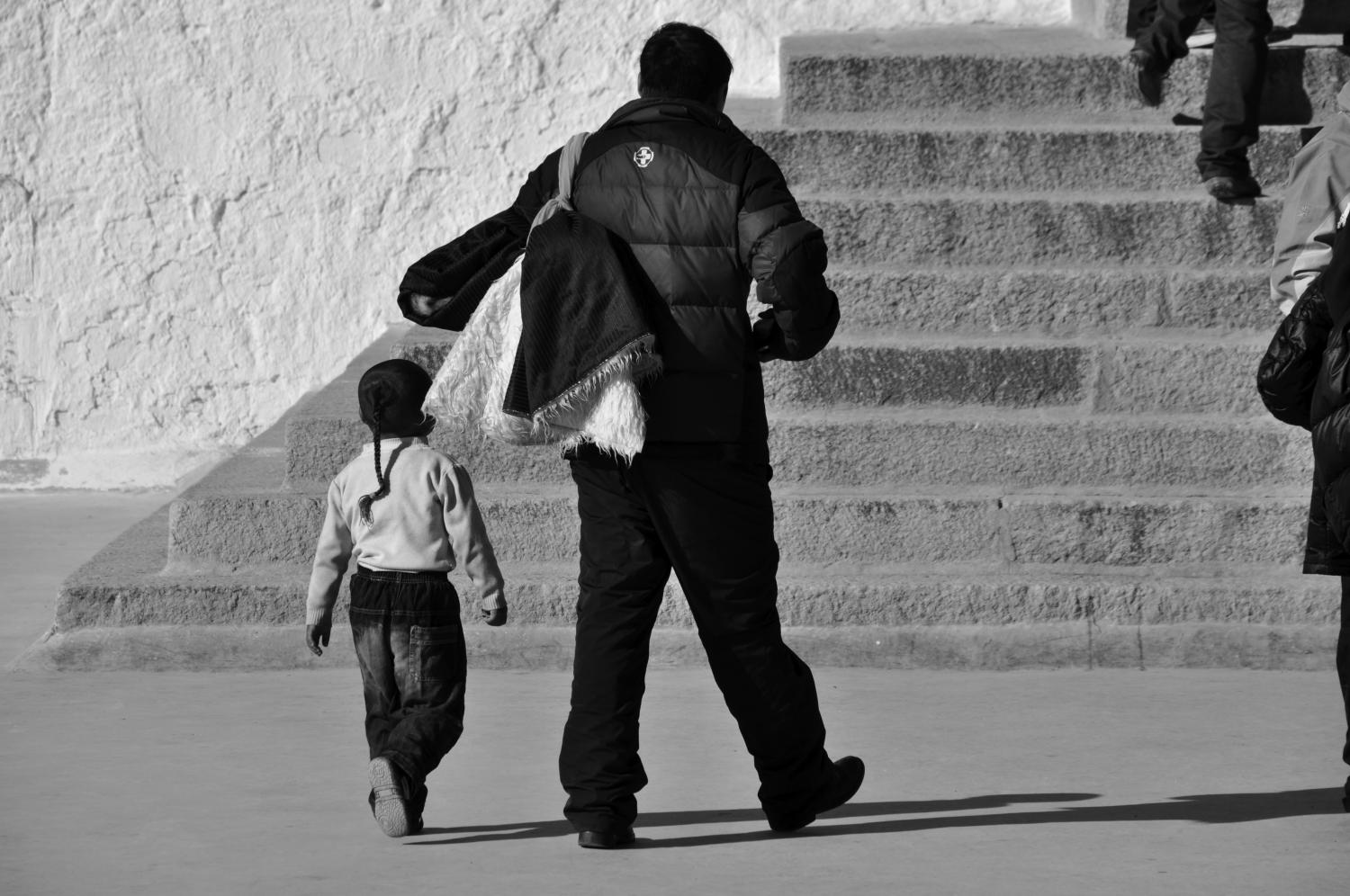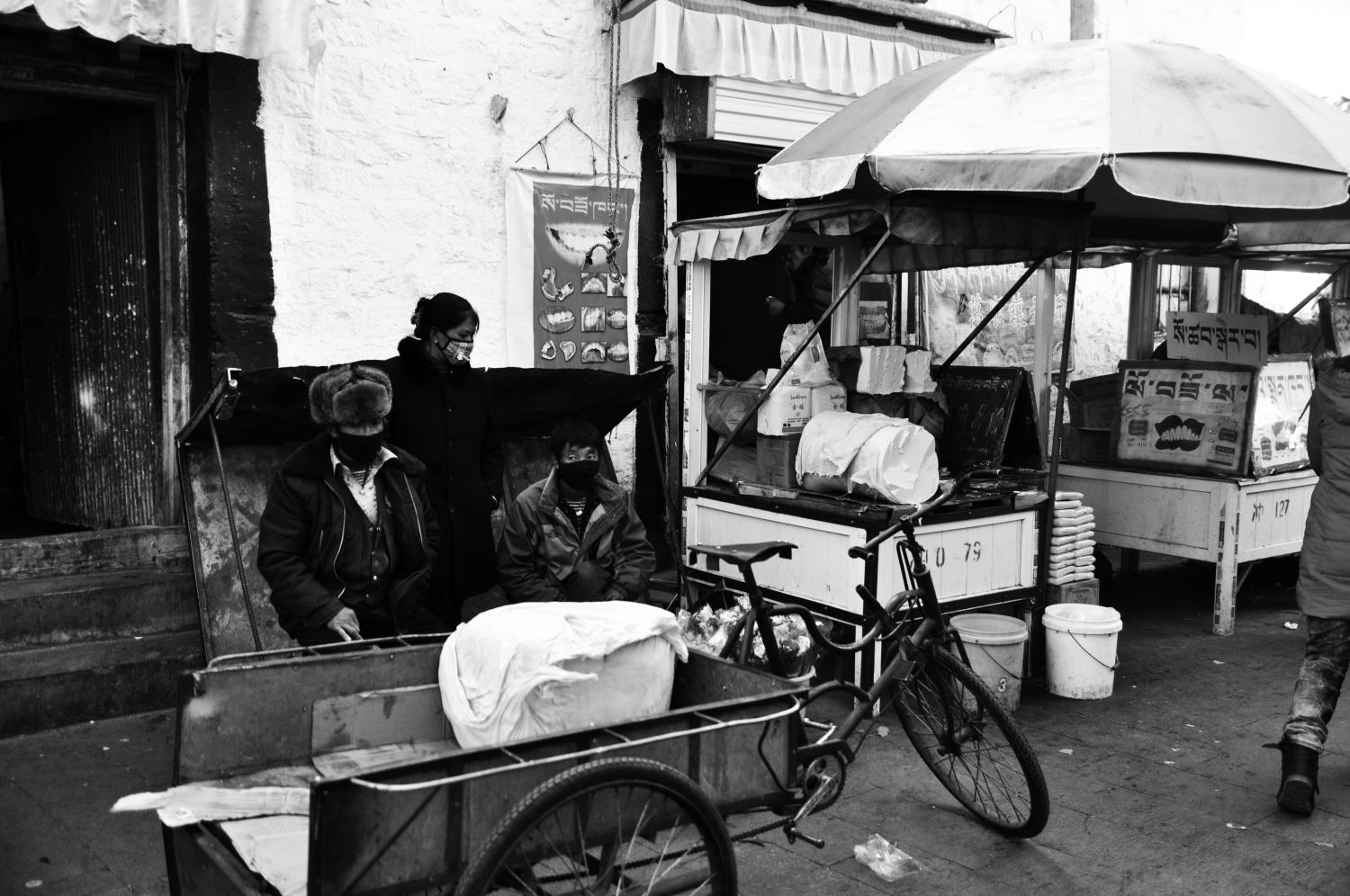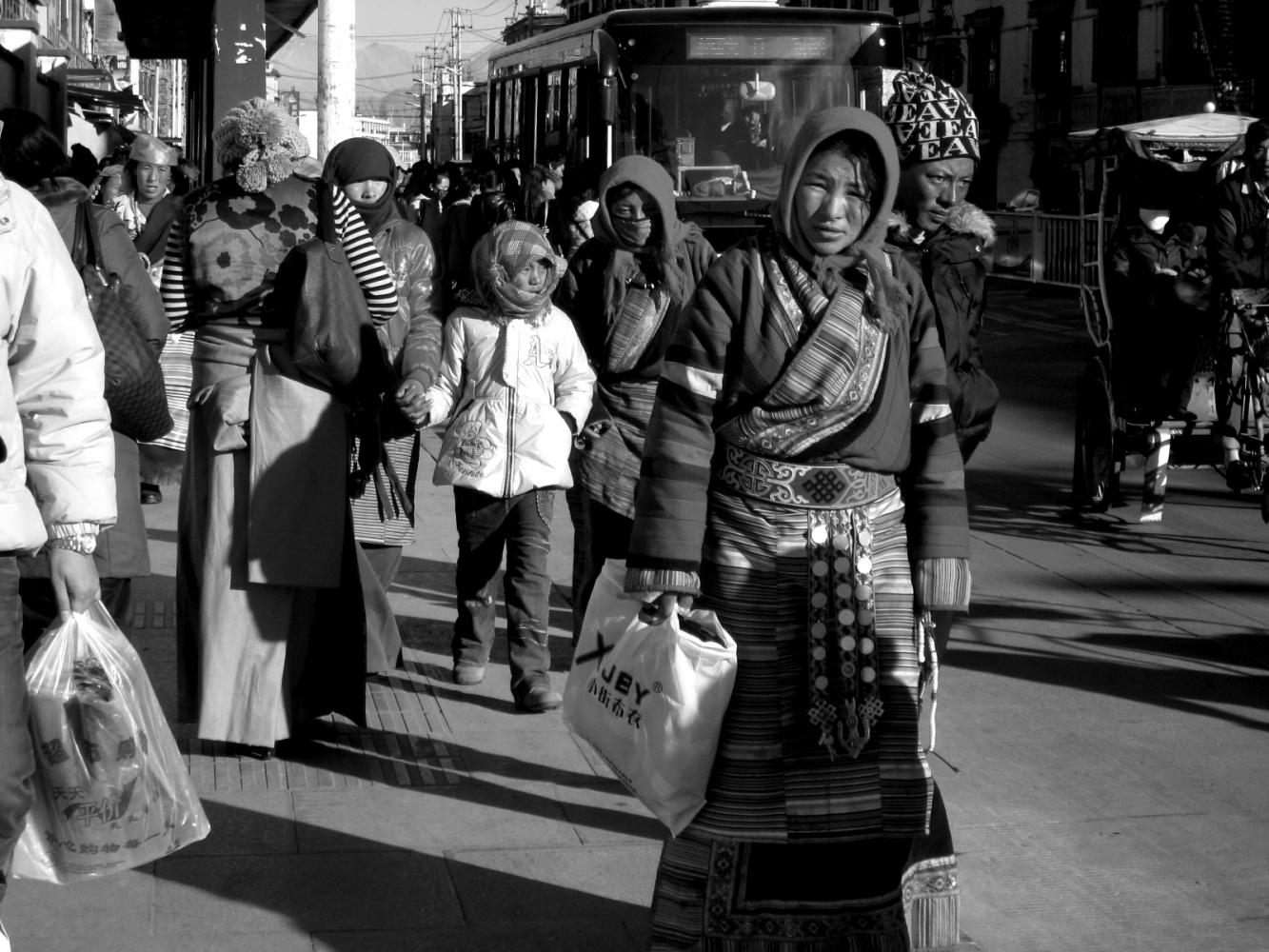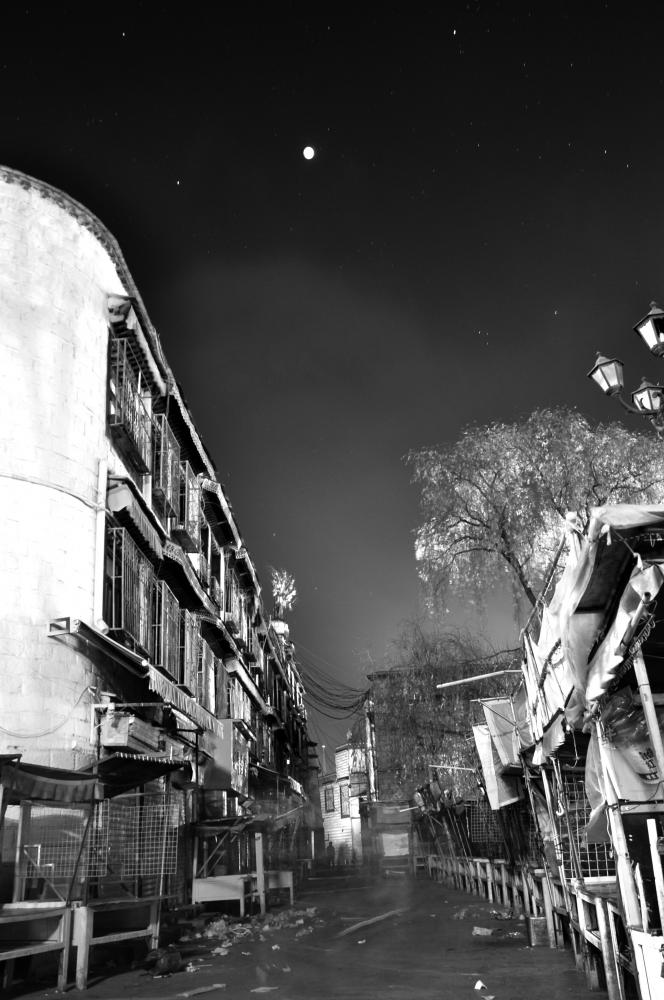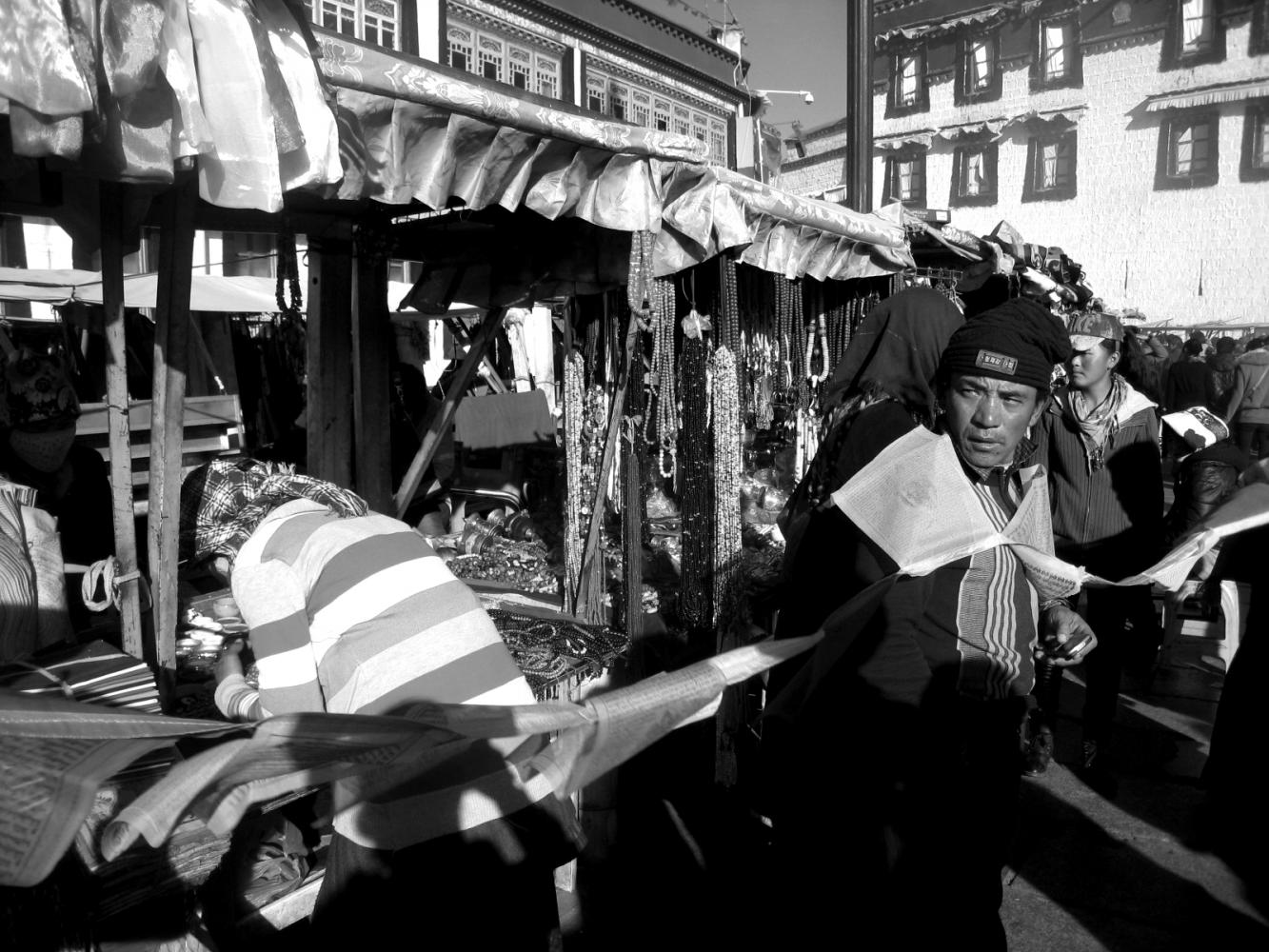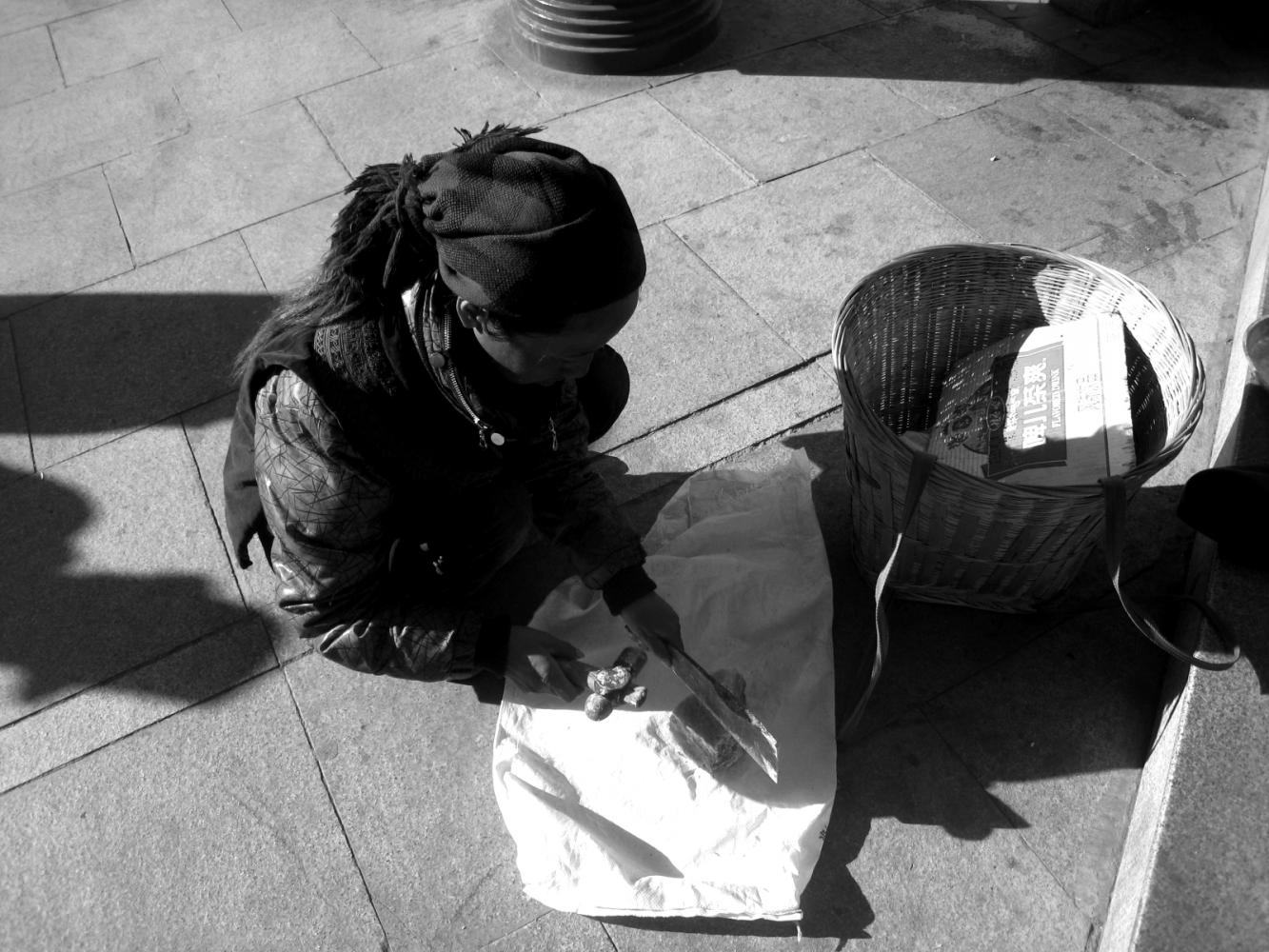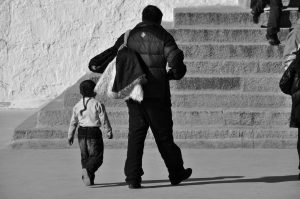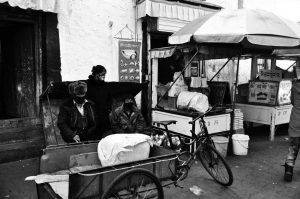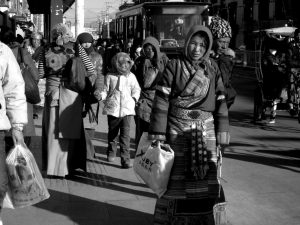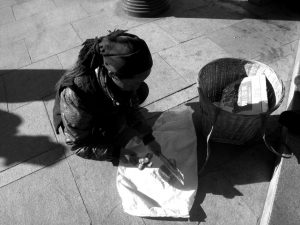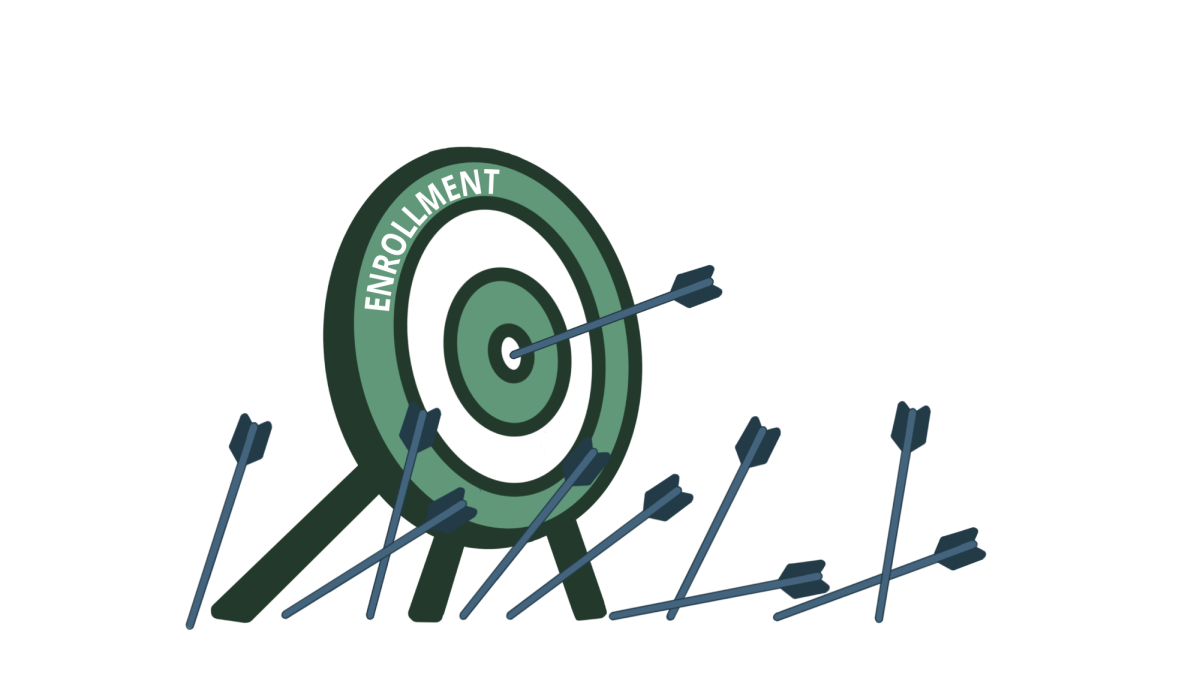Looking at Life in Lhasa
April 25, 2012
The Potala Palace is the center of religious and social life. It houses thousands of ancient Buddhist scriptures and the remains of former Dalai Lamas. Before his exile, the palace served as the 14th Dalai Lama’s residence. Currently, the Chinese government allows a limited number of monks to study and work at the palace. Every year, the palace is visited by hundreds of thousands of pilgrims from China, Tibet and other countries.
A child visits the Potala Palace with his father. Although they both wear western clothing, the boy observes traditional Tibetan practices by wearing his hair in a single ponytail, wrapped in bright red string.
Despite the heavy military presence, Tibetans continue everyday activities. Outside one of the many shops near the palace, men wait to sell yak butter and flowers to pilgrims on their way to worship. Yak butter is used as oil for candles in the palace, and each pilgrim is expected to bring their own butter to light.
The mixture of traditional Tibetan and western clothing in this street scene speaks to the Tibetan people’s continued observance of their history and culture while embracing modern styles. Though many young people purchase their clothing at Lhasa Department Store, the main retailer of western clothing, small traditional clothing shops still line the city streets.
An alleyway stands deserted during a lunar eclipse. Its residents have all gone to the temple for the night’s festival.
In the background of this market scene, a People’s Liberation Army security camera records the bustle, watching for signs of unrest or possible protest. Due to governmental censorship of all information leaving Tibet, the exact number of such protests, including self-immolation, is unknown. At least 32 self-immolations in protest of the Chinese occupation and human rights abuses have been confirmed since mid-March 2011.
A woman outside the post office sells preserved honey from a wicker basket. Blocks of honey are added to traditional Tibetan yak butter tea. Yak products including meat, milk, and butter, comprise a significant portion of the Tibetan economy.



